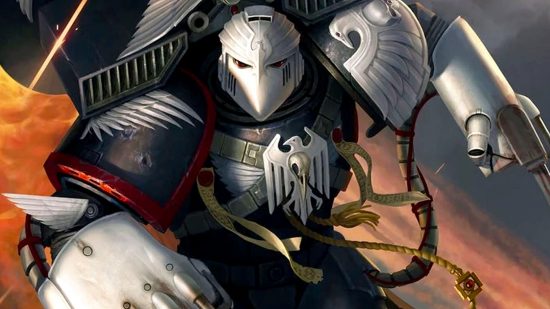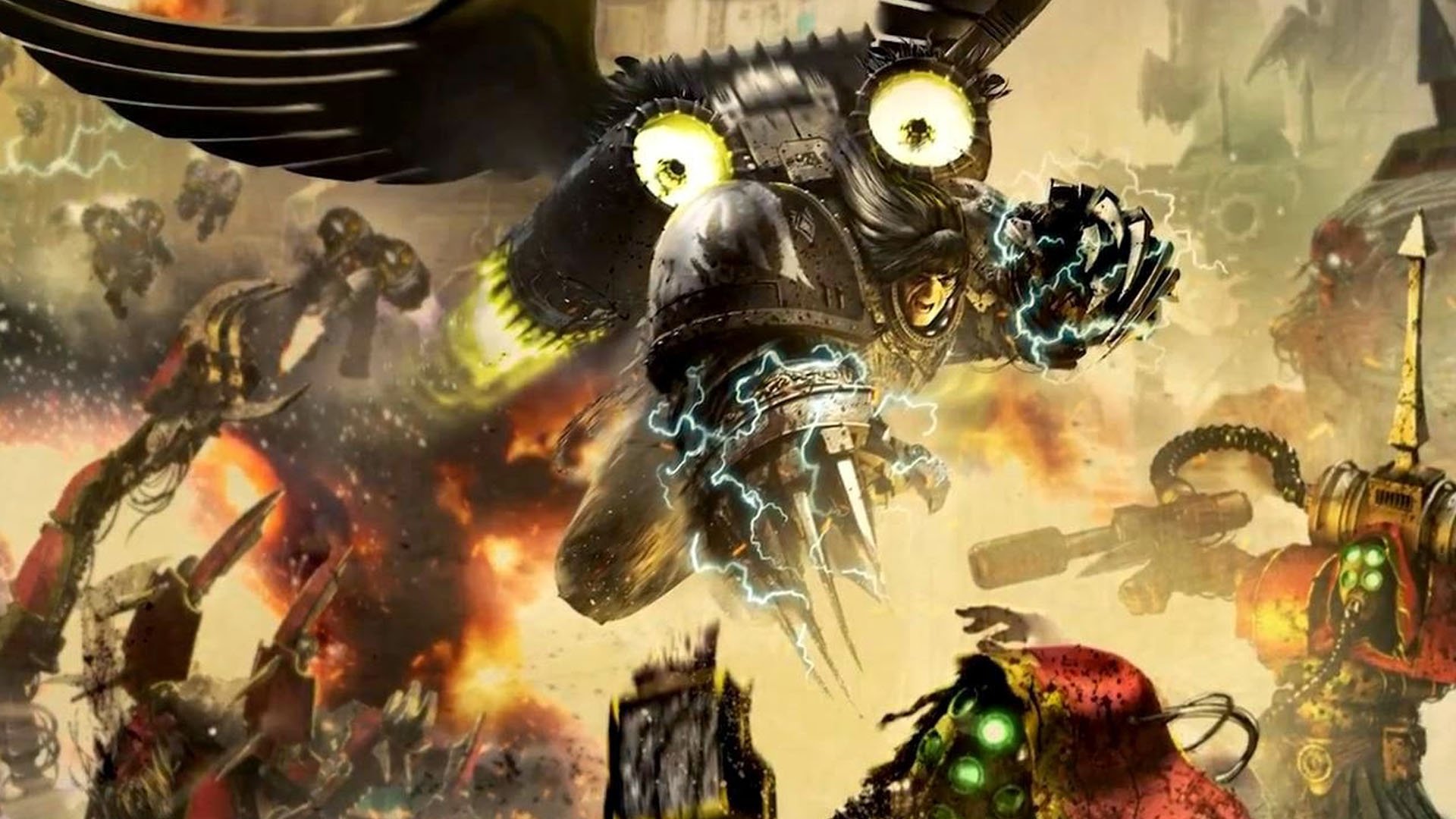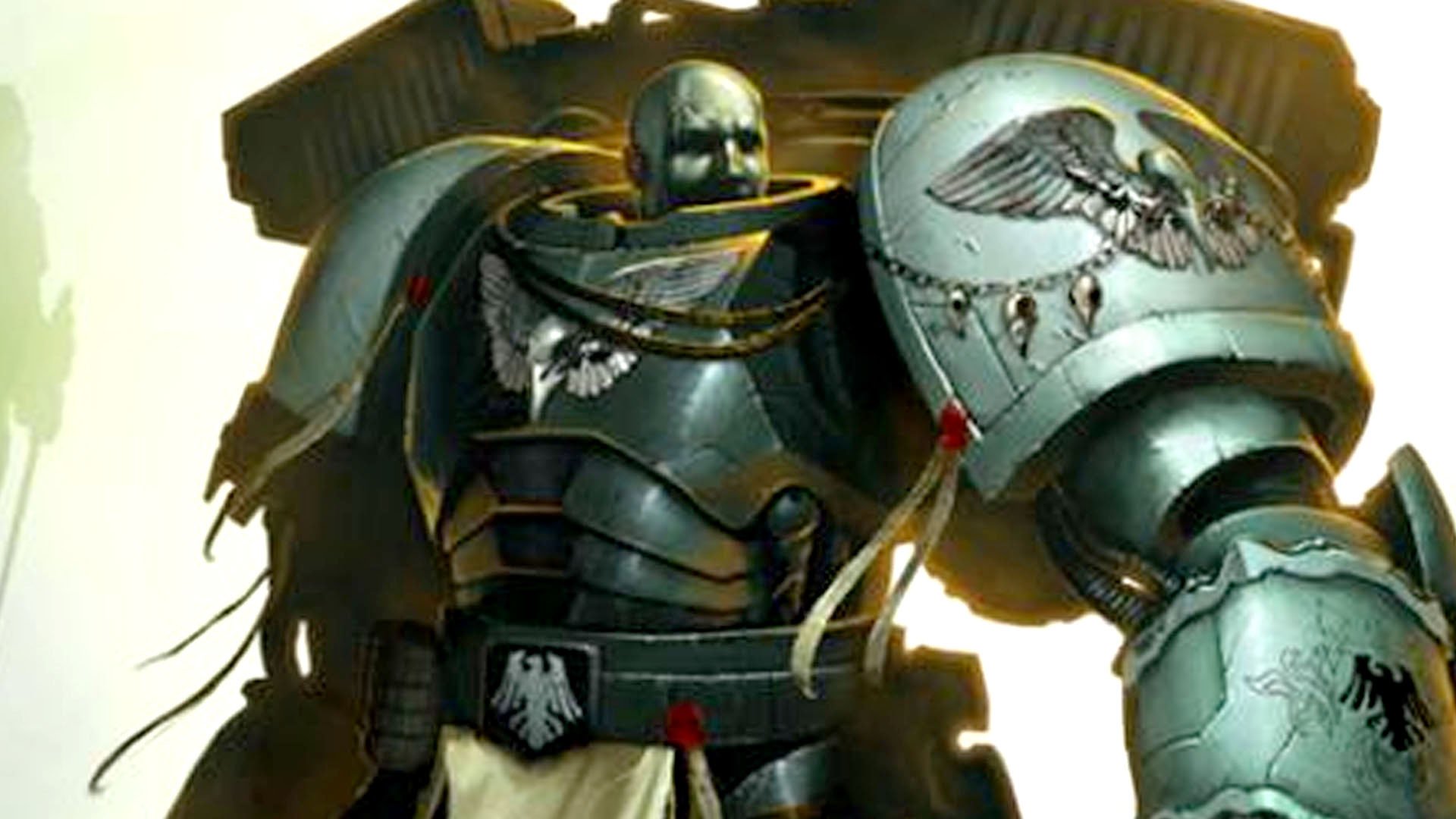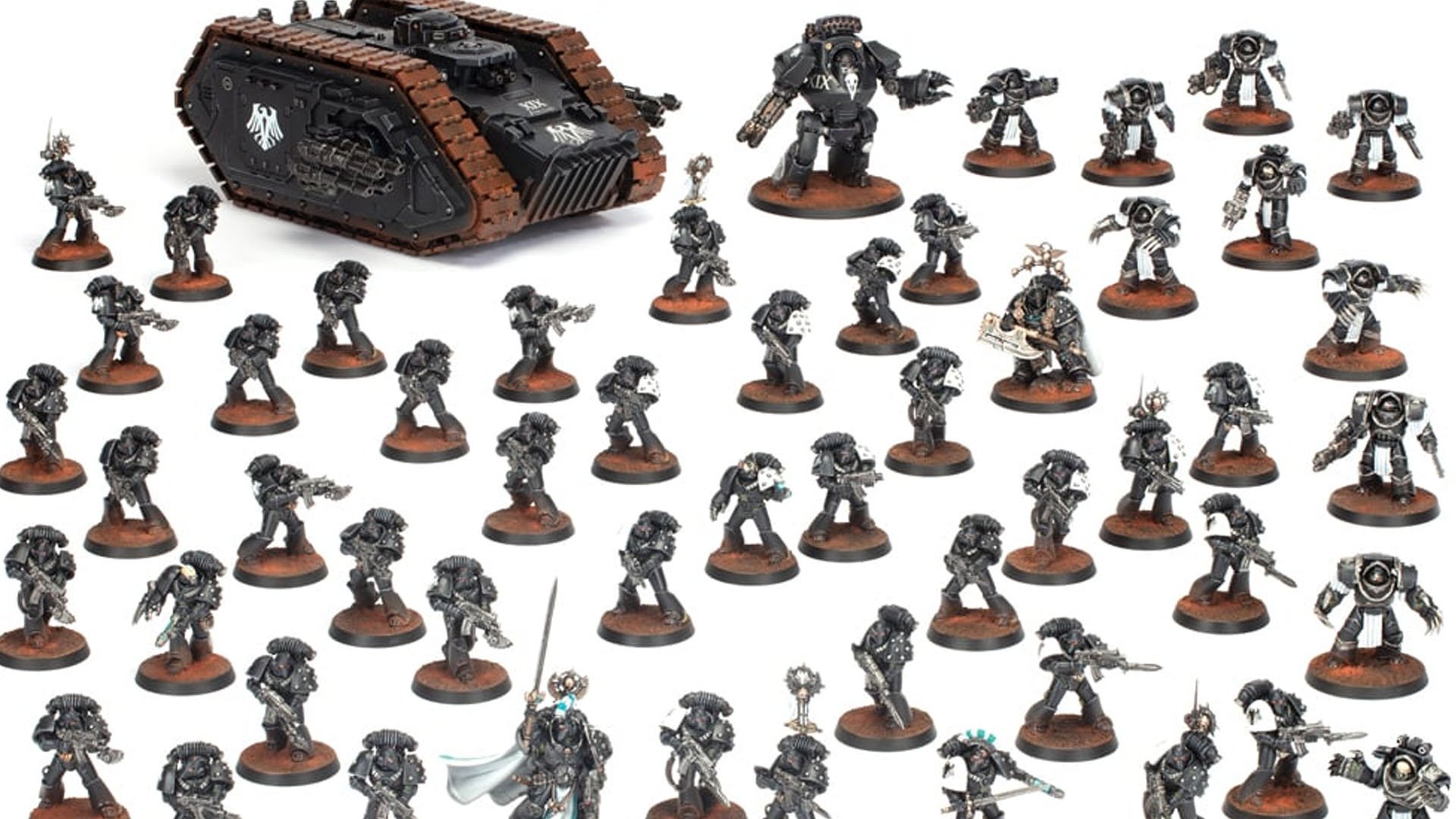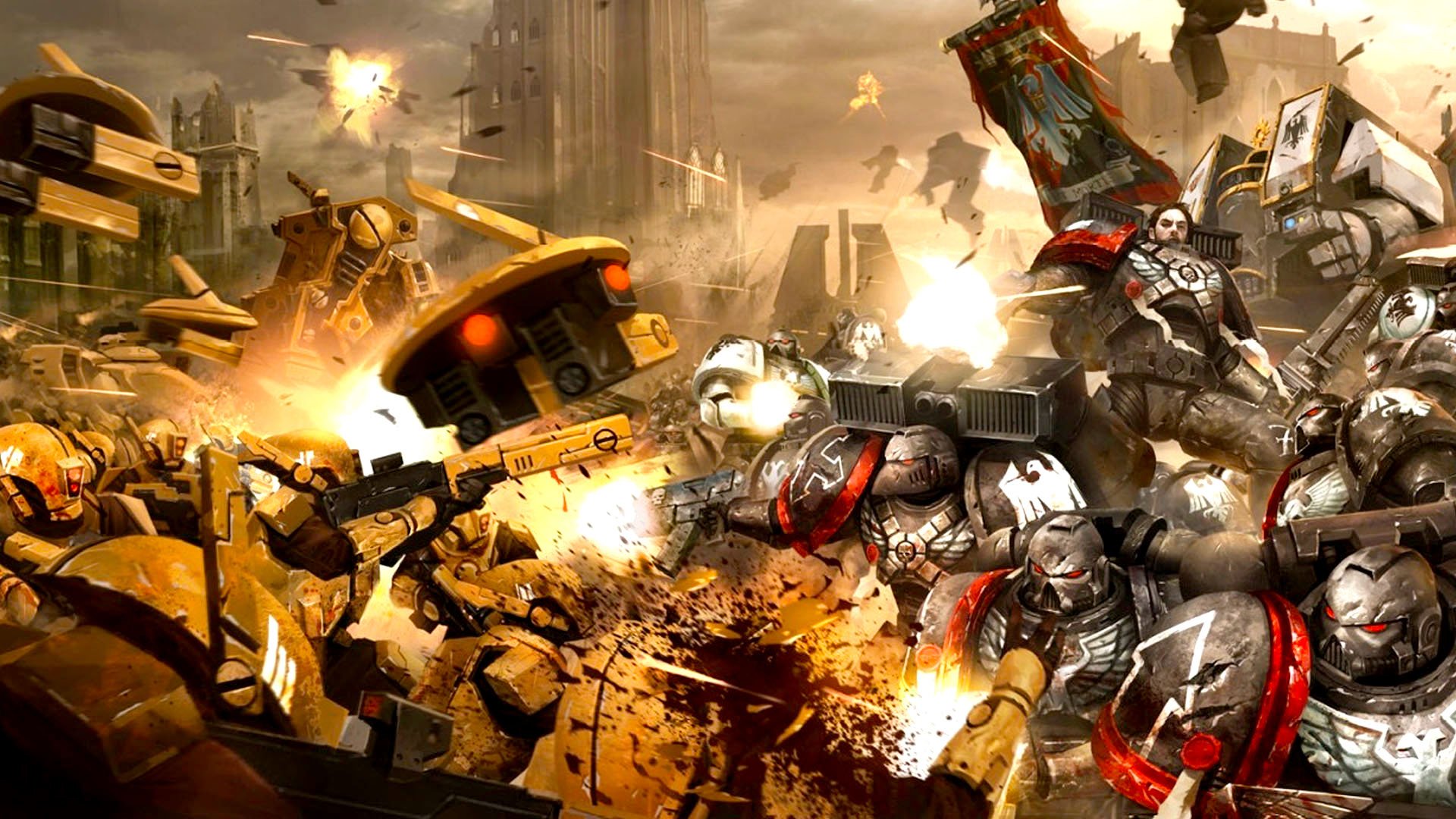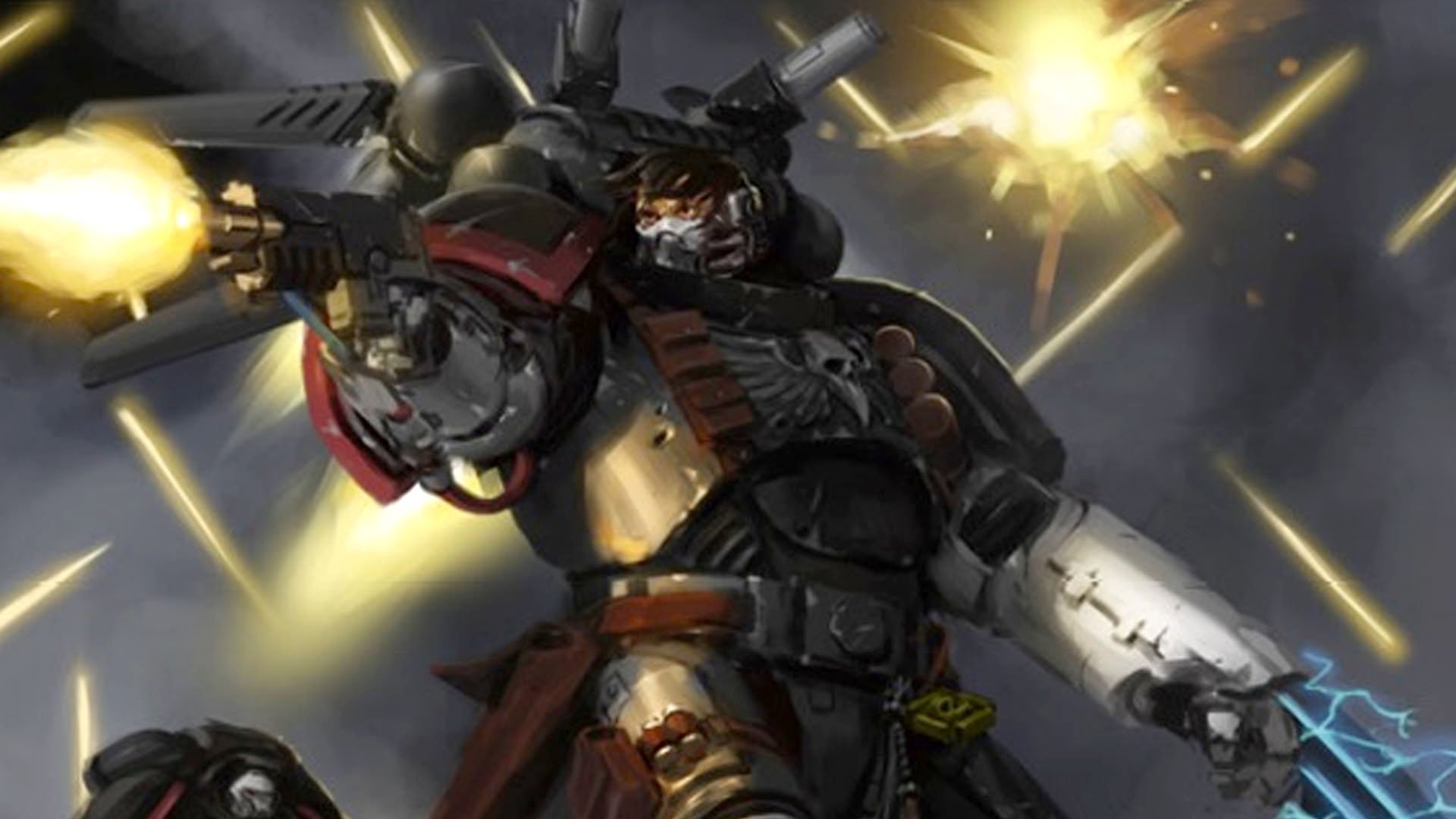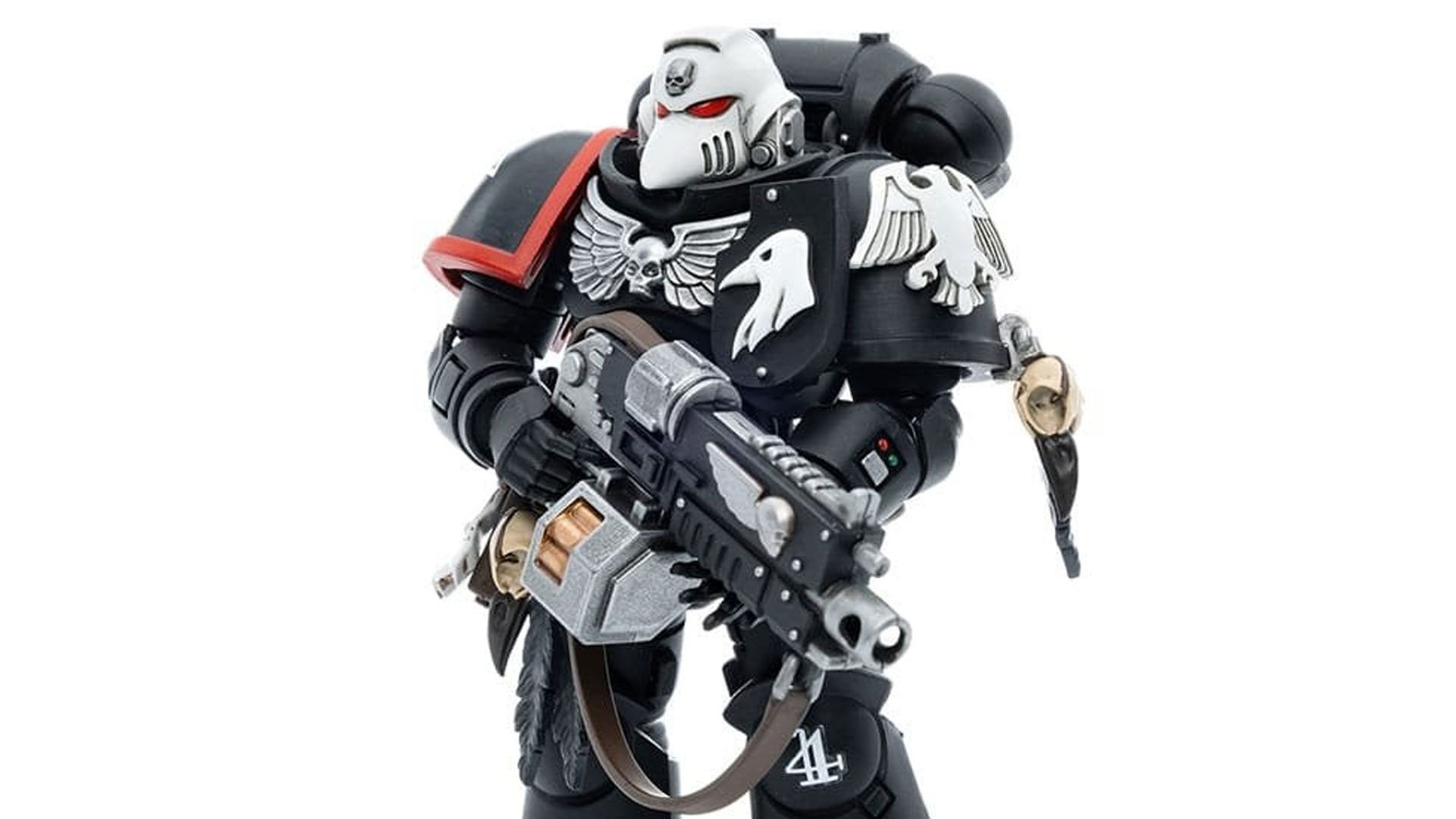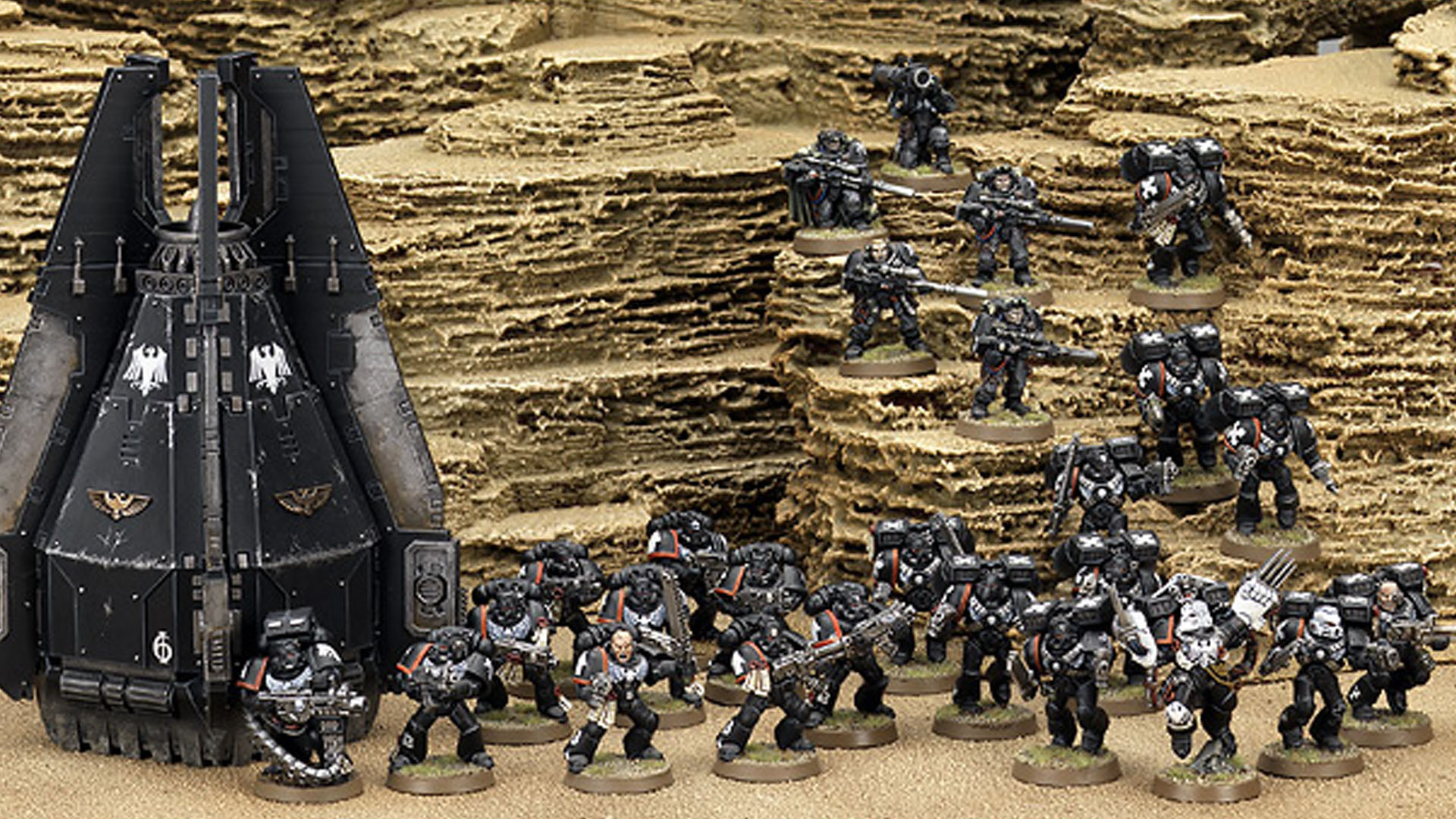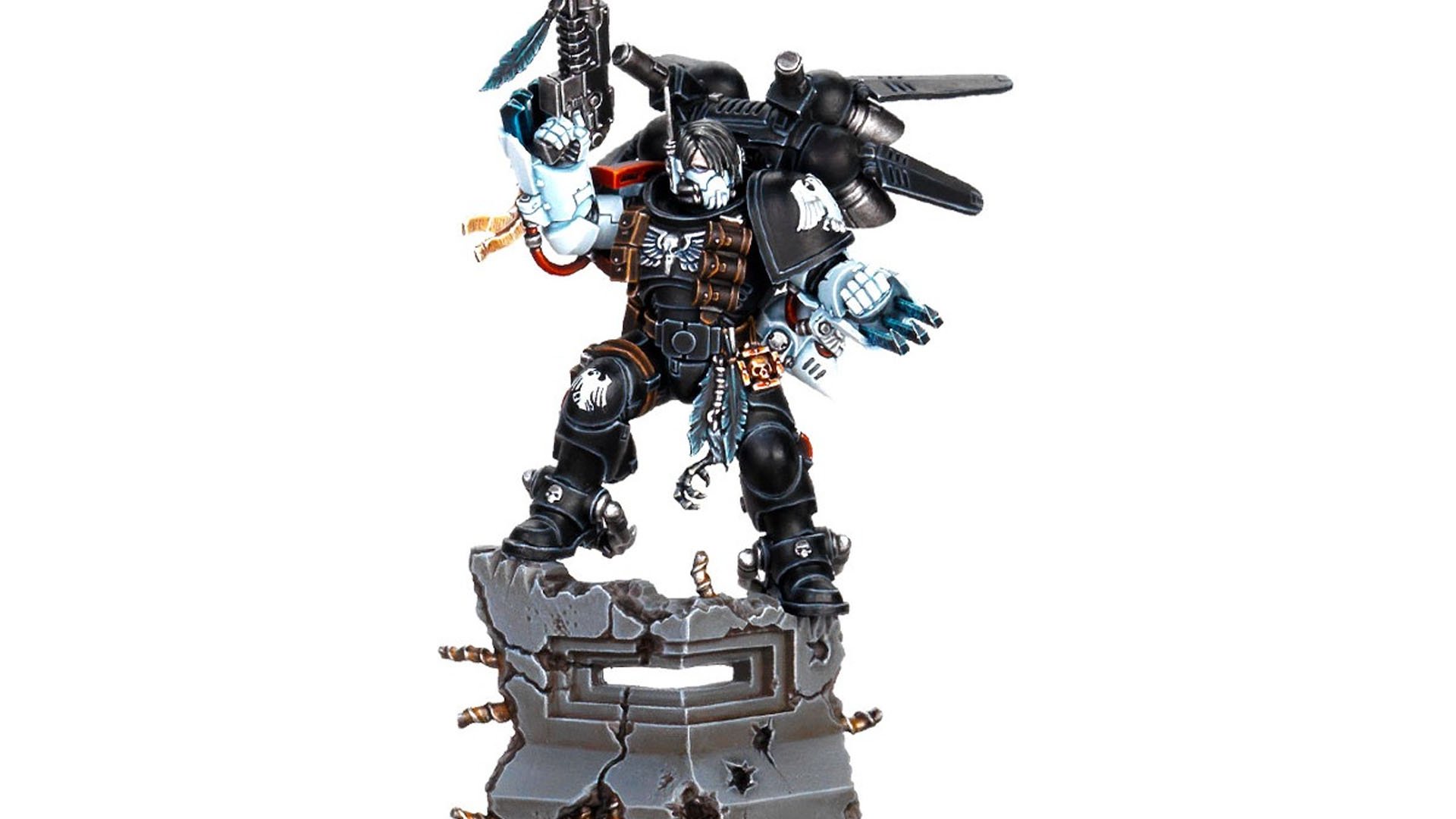The Warhammer 40k Raven Guard chapter of Space Marines is shrouded in mystery, often quite literally. Striking silently from the air, never where you expect, they could be behind you right now. This guide has everything you need to know about these masters of stealth and precision warfare.
With a long history blighted by tragedy, betrayal, and lashings of hard decisions, the Raven Guard are a Warhammer 40k faction of black-and-white armored Space Marines whose continued existence is little less than a miracle. Come with us as we meet Games Workshop’s best bunch of bird boys.
Warhammer 40k Raven Guard guide
- Raven Guard primarch – the lore of Corax’s legion
- Raven Guard successor chapters – meet the modern sons of Corax
- Raven Guard in Warhammer 40k – where are they now?
- Kayvaan Shrike – chapter master of the Raven Guard
If you’re planning on raising a Raven Guard force, you should also check out our guides on painting miniatures, our favorite choices of paints for miniatures, and our specialist tips on how to paint Space Marines. For now, though…
Raven Guard primarch
The lore of Corax’s legion
Founded as the 19th Space Marine legion, the original Raven Guard specialised in infiltration, stealth, and covert operations. In many ways they emulated Konrad Curze‘s Night Lords, deploying terror as a deadly weapon, destabilising their foes, and sowing chaos before striking from the shadows – though, unlike their Nostraman cousins, they would never become Chaos Space Marines.
After twenty years battling in the Emperor of Mankind’s Great Crusade, they were finally reunited with the Raven Guard primarch and Gene-Sire, Corvus Corax, on his home world Deliverance – a moon of the planet Kiavahr.
Corvus Corax had recently liberated the moon from the domination of Kiavahr’s oppressive Forge-Guilds. Upon assuming control of the Raven Guard, he quickly overhauled their combat doctrines, turning them into a precision force using tactics much like those he had implemented during his revolution. Casting out much of the Terran culture of the old Raven Guard, the new Legion stood as proud sons of Deliverance, specialising in rapid-strikes, stealth, sabotage, and hitting the enemy in critical locations.
During the Horus Heresy, the Raven Guard were one of the legions deployed to Isstvan V. Due to being caw-ght by surprise by the unexpected betrayal of Horus Lupercal and his traitor legions, they were unable to deploy any of their tactics, and as a result were massacred. Though they managed to fight free of the trap, the Raven Guard were diminished from a fighting force of 80,000 legionaries to a meagre 3,000.
In desperation, Corvus Corax sought to rebuild his legion’s numbers. By using gene tech provided by the Emperor himself, new troops were created en-masse, rapidly growing into maturity as Space Marines. These new soldiers, known as Raptors, quickly became part of the Raven Guard fighting force and were deployed with brutal efficiency, often outstripping their traditional Space Marine brethren.

Unbeknownst to Corvus Corax and the Raven Guard, however, Omegon and the Alpha Legion secretly managed to taint the gene tech with Chaos Daemon blood. Newer Raptors implanted with gene seed touched by Alpha Legion infiltrators found themselves slowly twisted with chaos mutations, though they still possessed their faculties.
When Corvus Corax discovered this sabotage by Warhammer 40k Chaos forces, he ended the Raptor programme. Despite their mutations, however, the Raptors were awarded full honors by the Raven Guard and continued to fight with them loyally for many years, throughout the Horus Heresy.
Due to these setbacks, the Raven Guard struggled to replenish their numbers. Still an effective fighting force, they struck traitor locations across the galaxy, always appearing where the enemy least expected. Their campaign of harassment and sabotage meant they did not take part in the Siege of Terra at the climax of the Heresy. Instead, they focused on crippling traitor forces and aiding Lion El’Jonson‘s noble Dark Angels and Leman Russ‘ ruthless Space Wolves in prosecuting their war of righteous vengeance.
Following the end of the Horus Heresy, after re-organising the Raven Guard according to Roboute Guilliman’s new Codex Astartes, Corvus Corax departed his sons to continue the fight against the traitor legions in the Eye of Terror. Since then he has not been seen – at least, not by any loyalist Space Marine. Lorgar Aurelian, primarch of the malignant, chaotic Word Bearers, may have something else to say on the matter.
Raven Guard successor chapters
Meet the modern sons of Corax
One of the key changes Roboute Guilliman, primarch of the Ultramarines, implemented after the end of the Horus Heresy was to prevent any one legion being able to field the many thousands of legionnaires previously possible. Some chapters chafed at having their numbers reduced, but the Raven Guard successor chapters were able to keep the legion’s existing structure, albeit with a much smaller form.
The Raven Guard successor chapters tend to take after the original chapter, at least in a predisposition to name themselves after birds. Chapters like the Dark Eagles, Death Eagles, Flame Eagles, Imperial Talons, Iron Ravens, Knights of the Raven, Necropolis Hawks, Raptors (unrelated to the Horus Heresy-era Raptors), Raven’s Watch, Storm Hawks, and Storm Wings all display a similar taste for the avian.
| Known successor chapters | Suspected successor chapters |
| Ashen Claws | Carcharodons |
| Black Guard | Hawk Lords (Raven Guard or Ultramarines successors, unknown) |
| Dark Eagles | Sons of the Raven |
| Death Eagles | |
| Death Spectres | |
| Flame Eagles | |
| Imperial Talons | |
| Iron Ravens | |
| Knights of the Raven | |
| Necropolis Hawks | |
| Raptors | |
| Raven’s Watch | |
| Revilers | |
| Rift Stalkers | |
| Shadow Haunters | |
| Storm Hawks | |
| Storm Wings | |
| The Silent | |
| Void Sabres |
Other chapters take inspiration from the tactics of the Raven Guard. This is how we get shadow-themed legions like The Silent, Void Sabres, Black Guard, Death Spectres, Rift Stalkers, and Shadow Haunters. These chapters also tend to mirror the Raven Guard colour scheme, with a predilection for dark colours and shadowy tones.
Not all Raven Guard successors stayed loyal, however. Notably, the Ashen Claws turned pirate, and are known for terrorising systems in the Ghoul Stars, though they have not been heard from in millennia.
Raven Guard in Warhammer 40k
Where are they now?
In the 41st millennium, the Raven Guard continue to fight for the Imperium of Man, despite misfortune that would wipe out a lesser legion. Their gene-seed has begun to degrade, causing many Space Marine organs to cease working. The Mucranoid and Betcher’s Gland do not grow at all in Raven Guard aspirants, and their Melanchromic Organ has a mutation which causes Raven Guard skin to become deathly pale.
In the millennia following the end of the Horus Heresy, the Raven Guard gene-seed became irrevocably unstable with all organs and implants failing. To remedy this, they began to rely solely on stocks of gene-seed held on Terra itself. This process has considerably slowed recruitment, leaving the Raven Guard constantly under strength.
The Raven Guard have a unique culture amongst Space Marines. While they have a reputation for being dour warriors, they tend to look to the welfare of Imperium citizens with more care than many chapters, in part due to their own legion’s history as slaves who rose up in rebellion.
Much of their culture focuses around maintaining stealth, such as their usage of a form of sign language known as ‘Corspake’, keeping vital information out of the ears of eavesdroppers.
Unlike some Horus Heresy-era Raven Guard and their own Primarch, modern Raven Guard cannot meld with the shadows to hide. Instead, they use a variety of stealth techniques in order to hide from sight, even managing to go unnoticed even in power armour. This is known as ‘wraith-slipping’.
Though much of the Raven Guard is geared towards stealth and rapid, precision strikes, they still have access to heavier armaments. Raven Guard do field Space Marine Terminators, fighting as part of the 1st Company, The Black Wings.
Kayvaan Shrike
The current Raven Guard Chapter Master, known as the Master of Shadows, is Kayvaan Shrike.
A veteran of many battles and one of the most famous Raven Guard characters, he continues to lead the Raven Guard – though forever seeking a replacement so he can rejoin the frontlines at the head of a Battle Company.
The magnificently emo-fringed model shown above is the current Kayvaan Shrike miniature, released in 2019. Originally a ‘firstborn’ space marine, Shrike has since crossed the dreaded ‘Rubicon Primaris’, undergoing the painful and perilous procedures required to be upgraded to a Primaris Space Marine – the new, stronger genetic template of Adeptus Astartes designed by the eccentric Archmagos Dominus Belisarius Cawl, of the Adeptus Mechanicus.
There’s even a JoyToy 1:18 scale action figure of Shrike, if that’s more your speed.
Made it through this entire guide without being caught in the power claws of swooping Raven Guard assault marines? Impressive – next, why not try some other chapters on for size; we recommend our guides to the stately Blood Angels and their primarch Sanguinius; the steadfast Imperial Fists and the Praetorian Rogal Dorn, or the industrious Iron Hands and their dour gene-father Ferrus Manus.
